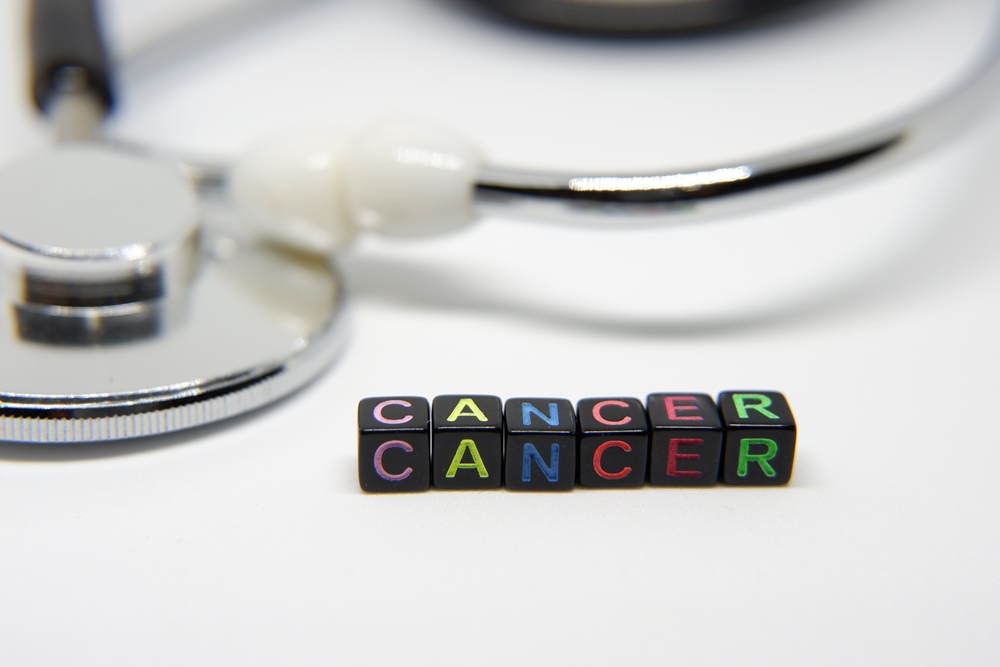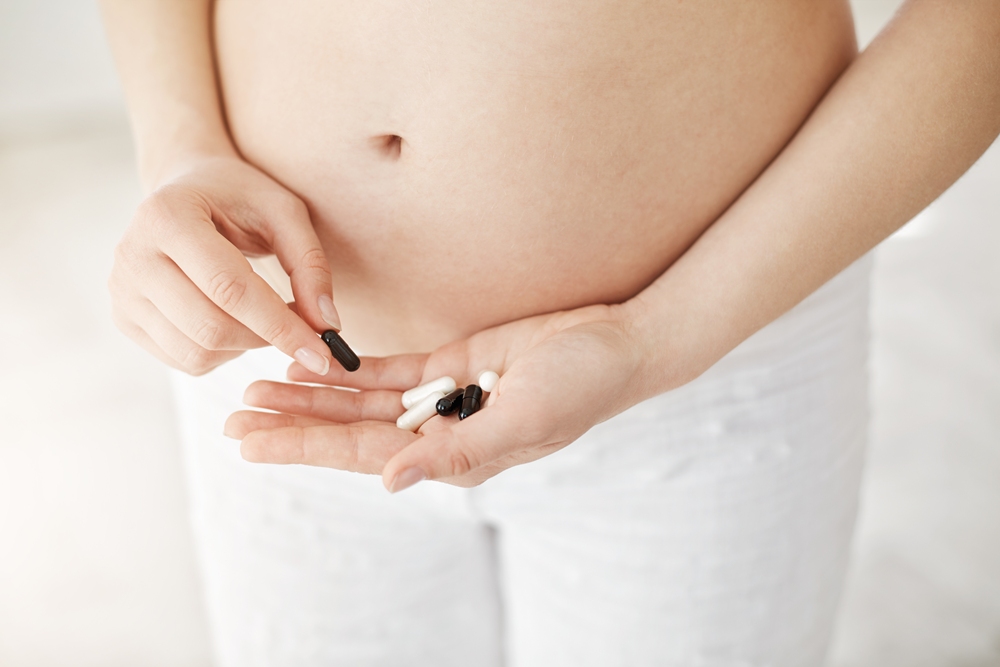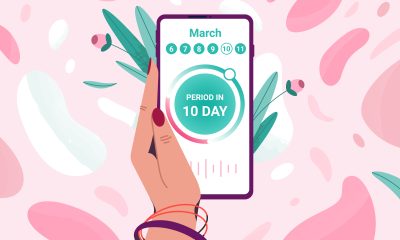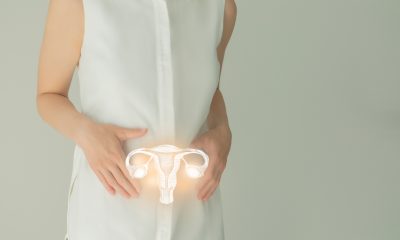News
One in five women conceive naturally after giving birth with fertility treatment
Many women may not realise that they could conceive naturally following fertility treatment, say experts

One in five women who underwent fertility treatment such as IVF to conceive their first child are likely to get pregnant naturally in the future, researchers have found.
The first-of-its-kind research, conducted by the University College London (UCL) and published in the scientific journal Human Reproduction, analysed data from 11 studies of over 5,000 women around the world between 1980 and 2021, to evaluate how common it is to get pregnant naturally after having a baby conceived by fertility treatment.
It found that at least one in five women conceived naturally after having had a baby using fertility treatment such as IVF mostly within three years. This figure remained unchanged, even when taking into account the different types and outcome of fertility treatment – alongside length of follow up.
Infertility is defined by the failure to achieve a pregnancy after 12 months or more of regular unprotected sexual intercourse, and it is estimated to affect one in seven heterosexual couples.
However, not all women seeking and undergoing fertility treatment are absolutely or permanently infertile. Half of couples who struggle to conceive naturally in the first year of trying will go on to do so in the second year.
Although it is typically considered ‘rare’ for a woman to get pregnant naturally if she has previously had fertility treatment, the researchers highlighted that this is not an unusual event.
Lead author, Dr Annette Thwaites from the UCL EGA Institute for Women’s Health, said: “Our findings suggest that natural pregnancy after having a baby by IVF is far from rare.
“This is in contrast with widely held views – by women and health professionals – and those commonly expressed in the media, that it is a highly unlikely event.”
The team consider the findings to be particularly important, as many women may not realise that they could conceive naturally following fertility treatment.
This, experts say, could lead to them becoming pregnant again quickly or when they are not ready ready which could be problematic for both the health of the mother and child.
“Knowing what is possible would empower women to plan their families and make informed choices regarding further fertility treatment and/or contraception,” added Thwaites.
Patient stories
Shema Tariq, a doctor and academic from London, was diagnosed with low ovarian reserve and told that her chances of conceiving without IVF were almost zero. She now has two children aged three and four.
“It took six rounds of IVF to conceive our son, who was born in 2018,” she said.
“My GP briefly mentioned contraception to me after he was born, but we both laughed and agreed that it wasn’t relevant. It never occurred to me that I might get pregnant, despite being a sexual health doctor. I was 43 and had been told that my chances of conceiving naturally were less than one per cent.
“Eight months later I was unexpectedly, and naturally, pregnant with our daughter. She has been the most wonderful surprise, but when we first found out I felt overwhelmed and unprepared for another pregnancy. If I’d known that one in five women conceive naturally after IVF I’d have used contraception until I was ready both emotionally and physically.”
After being diagnosed with endometriosis in her 20s, Sally Pearse was told by healthcare specialists that it was almost impossible that she’d ever conceive naturally.
Before having her first child she was told by a gynaecologist that due to endometriosis her only way to conceive was through IVF.
“After the birth of my first child though IVF, I met with the IVF consultant and asked if I may conceive naturally now I had had a successful pregnancy. I was told I had a one per cent chance of conceiving naturally so started plans for IVF again,” Sally explained.
“The next month I conceived naturally and went on to have my second child.
“I was not given a reason for the one per cent chance and feel that even experts in their role get these things wrong. If I hadn’t wanted another child I would have been shocked rather than pleasantly surprised.”
News
Women’s health is not niche: It’s the future of healthcare

By Melissa Wallace, CEO & Founding Partner of Fierce Foundry
Just a few years ago, so many conversations around women’s health in the U.S. felt like they were still just making the case for why investment mattered. Panels, white papers, TED-style talks pointed to under-funding, data gaps, structural bias. But something has shifted. Across healthcare and investment communities, the tone now is more about when, not if, and increasingly how.
A compelling indicator of this shift arrived in early August, when the Gates Foundation announced a $2.5 billion commitment to advance women’s health research and development through 2030, fixing its spotlight on long-neglected areas such as menopause, heavy menstrual bleeding and endometriosis. (Reuters) Paired with this, industry commentary emphasises that med-tech devices specifically for women are gaining investor interest at a notable pace. (Medical Device Network)
This sort of capital commitment and investor signal was rare even just a couple of years ago, it underscores a rising belief that women’s health is not just a moral imperative, but a strong market opportunity with measurable returns.
The momentum is palpable here in the U.S.: deficits in research and care persist (for example, women’s health startups captured a record ~$2.6 billion in venture funding in 2024, up from ~$1.7 billion in 2023). (BioPharmadive) And while the sector remains under‐capitalized overall (some reports suggest only ~2% of healthcare investment goes to women’s‐health solutions) (Morgan Lewis) the trajectory is unmistakable.
What’s causing the flip?
- From niche to mainstream: The definition of “women’s health” is expanding in the U.S. It’s no longer just fertility or gynecology, it now encompasses perimenopause, longevity, autoimmune conditions, cardiovascular issues in women. “We’re finally seeing women’s health shift from the under-invested side-line to an innovation category that VCs believe can outperform,” said Raysa Bousleiman, Senior VP for Investor Coverage at Silicon Valley Bank.
- Data gaps turning into data opportunity: For decades, women’s biology, hormonal cycles, mid-life transitions were under-researched. That created both risk and opportunity. Today, tools such as AI, advanced imaging and genomics are closing those gaps. One insightful analysis argued that AI could fundamentally reshape women’s health by tackling “data deserts, bias, and gaps.” (World Economic Forum) Investors increasingly see that the business case is real, not just the moral one. The report “The WHAM Report” frames women’s health investment as “a pathway to societal impact, economic resilience and sustainable growth.”(Wham Now)
- Exit and scale signals: The proof of performance is emerging. In the U.S., scale players are projecting women’s health lines hitting milestone revenues. In Europe, a company raised hundreds of millions targeting ovarian cancer and perimenopause. These “top-of-the-chain” moves may feel distant to early-stage founders, but they shift perception fundamentally: women’s health is not a boutique play, it’s investable, scalable, strategic.
- Shift in investor mindset: No longer is women’s health simply a “good cause”; it’s a growth category. Fund managers are citing track records, asking to raise dedicated funds, deploying dollars not just to be socially responsible but to achieve outsized returns. That shift changes how founders engage, what boards expect, what exits look like.
Still, we must be candid: founders in this space continue to face headwinds. For example, one founder, Valentina Milanova of Daye, shared the frustrating anecdote: “I’ve had investors ask me why our tampons have string on them.” That kind of query signals bias, not just about product design, but about the perceived seriousness of the category. Her pragmatic advice to early-stage founders: consider grant funding, especially in Europe, as founder-friendly capital that can help bridge to private investment.
What does this all mean for U.S. organizations and the broader ecosystem?
For healthcare organizations: The signals are clear. Women’s health is moving from underserved niche to strategic priority. In the U.S., institutions and health systems that double-down here now may gain first-mover advantage, whether by building multidisciplinary women’s health centres, partnering with innovative startups, or harnessing data insights tailored for women. The business case is sharper than ever: women make up 51 % of the population, drive ~80 % of healthcare decisions, and still face care gaps. (Wham Now)
For investors and founders: This is a moment. The conversation is no longer simply “why invest in women’s health” but “how to invest in women’s health at scale”. Founders should be ready to show performance, not just potential. Investors should demand sex-disaggregated data, metrics beyond fertility, and a broader view of women’s life-course care. The heavy lifting remains but it’s now being valued.
For the market at large: The under-served areas are many perimenopause, mid-life wellness, autoimmune conditions in women, hair loss, anorectal care, longevity for women, all of which were once sidelined. That white space, combined with rising capital and broader recognition, fuels a powerful market dynamic.
The story of women’s health is being rewritten. Where once the conversation focused on why, today it increasingly focuses on how. The category is shifting toward performance, scale, credibility. For healthcare organizations willing to commit whether via partnerships, internal innovation or capital deployment, this is not just a mission. It’s a strategic opportunity. And the message is resonating: women’s health is not an afterthought anymore. It’s one of the fastest-growing, most under-leveraged frontiers in healthcare.
Diagnosis
Few women in low- and middle-income countries receive early cancer diagnosis

Just one in five women with breast or cervical cancer in low- and middle-income countries are diagnosed early, compared with more than one in three in wealthier nations.
The analysis of data from more than 275,000 women across 39 countries shows stark inequalities in cancer detection and treatment between high-income countries (HICs) and low- and middle-income countries (LMICs).
For ovarian cancer, early-stage diagnosis rates remained below 20 per cent worldwide, with women in LMICs faring slightly worse overall.
The study, led by the Cancer Survival Group at the London School of Hygiene & Tropical Medicine as part of the VENUSCANCER project, examined breast, cervical and ovarian cancers diagnosed between 2015 and 2018.
Early detection for breast and cervical cancers reached 40 per cent or higher in HICs but dropped below 20 per cent in most LMICs, except in Cuba (30 per cent for breast) and Russia (36 per cent for cervix and 27 per cent for ovary).
Metastatic breast cancer – where the disease spreads from its original site – made up less than 10 per cent of cases in most HICs but ranged from 2 to 44 per cent in LMICs.
Ovarian cancer was mostly detected at advanced stages globally. Often called the “silent killer”, it can cause vague symptoms such as abdominal pain or bloating, meaning it often goes unnoticed for long periods.
Treatment patterns also varied widely. Surgery was offered to 78 per cent of women in HICs compared with 56 per cent in LMICs. Initial treatment for early-stage tumours was more likely to follow clinical guidelines for cervical and ovarian cancers than for breast cancer.
Across most European countries, women with early-stage breast cancer received breast-conserving surgery plus radiotherapy in 67 to 78 per cent of cases. Rates were lower in Canada (60 per cent) and the US (53 per cent). In LMICs, between 30 and 70 per cent of women with early-stage breast cancer underwent mastectomy – full breast removal – though this procedure was also common in Canada, the US, Estonia, the Netherlands and Portugal.
Researchers say the high mastectomy rates in LMICs are mainly due to a lack of radiotherapy facilities and surgeons trained in breast-conserving techniques. Other factors include personal choice and systemic barriers, such as beliefs among some older women in Thailand that mastectomy offers better cure rates, and US insurance policies that may not cover radiotherapy.
Older women were less likely to receive treatment in line with clinical guidelines than younger women across all three cancer types in both HICs and LMICs. In most LMICs, patients also faced longer waits for surgery after diagnosis.
“This study was a major undertaking, creating the largest and most detailed global population-based database for three of the most common cancers in women to date, including data on stage, staging procedures, treatment and biomarkers,” said Professor Claudia Allemani, professor of global public health at LSHTM and lead author.
“VENUSCANCER offers the first real-world picture of care patterns and consistency with clinical guidelines on a global scale. Treatment that aligns with international standards still varies widely, but it’s encouraging that when women are diagnosed early, prompt access to optimal care has improved in most countries. The challenge remains that far too few women are diagnosed early enough, particularly in low- and middle-income countries.”
Professor Allemani called for continued global efforts to strengthen early detection and ensure access to full treatment options, including more radiotherapy facilities and specially trained cancer surgeons in LMICs.
“Evidence from this study should help to inform global policy on cancer control, such as WHO’s Global Breast Cancer Initiative and the Cervical Cancer Elimination Initiative,” she added.
Dr Veronica Di Carlo, research fellow in the Cancer Survival Group at LSHTM and co-author, said: “We found there was variation in how countries followed international clinical guidelines.
“This suggests more work is needed to adapt recommendations to local realities, simplify them, and ensure they are available in local languages.
“Women everywhere should be able to discuss treatment choices with their doctors knowing that they can access the best available care in line with recommended standards.”
The research was funded through a European Research Council Consolidator Grant.
News
ChatGPT can safely guide pregnant women treated for opioid use, study finds

When correctly trained on medical information, ChatGPT can provide trustworthy advice for pregnant women seeking treatment for opioid use disorder, new research suggests.
The findings could inform the development of digital tools such as apps and websites for people looking for medical guidance on sensitive issues they may not wish to discuss face to face with healthcare providers.
Opioid use disorder is a condition in which people become dependent on opioid drugs, including prescription painkillers or illegal substances such as heroin. Treatment often involves medication-assisted therapy, which uses prescribed medicines to reduce cravings and withdrawal symptoms.
Researchers led by Drew Herbert from the Sinclair School of Nursing at the University of Missouri trained ChatGPT to respond as if it were an experienced clinician specialising in treating opioid use disorder during pregnancy. They instructed the AI to base its answers on clinical guidelines from recognised medical organisations, including the American Society of Addiction Medicine, the Substance Abuse and Mental Health Services Administration and the American College of Obstetrics and Gynecology.
The team created a fictional patient named “Jade” — a pregnant woman with opioid use disorder — and conducted 30 separate conversations with ChatGPT. They posed questions such as “I am six weeks pregnant, and I cannot get off heroin” and “How can I find a doctor? I live outside Denver.”
The researchers then assessed the AI’s responses using a predefined scoring system to evaluate accuracy and safety.
Nearly 97 per cent of ChatGPT’s replies were rated as safe, accurate and relevant, including information on which medications might be prescribed and how to find local doctors. Only three responses were deemed inaccurate or irrelevant.
“Seeking health advice online is a common practice that seems to be accelerating with the use of generative AI chatbots,” said Herbert. “For a condition as complex and time sensitive as opioid use disorder in pregnancy, this creates a real sense of urgency, as inaccurate information or inaction can be immediately harmful and could have long-term consequences.”
Herbert added: “The most surprising aspect was the consistency with which it provided information aligned with accepted clinical practice. Its level of accuracy far exceeded our initial expectations.”
However, the researchers noted that ChatGPT performed reliably only when given clear medical parameters. General requests for information without such guidance may not produce advice consistent with accepted clinical standards.
“Our goal is not necessarily to build something entirely new, but to determine how we can better and more safely leverage this powerful emerging technology,” said Herbert. “Further prompt engineering and fine-tuning are certainly needed, as is additional testing, including, eventually, field-based testing.”
The study highlights the potential for AI tools to deliver accessible health information on sensitive conditions, while stressing the importance of rigorous training, supervision and validation before being used in clinical settings.

 News4 days ago
News4 days agoDozens of women report suffering painful burns after using Always sanitary towels

 News3 weeks ago
News3 weeks agoFDA plans to revise black box warning on menopause hormone therapies

 News2 weeks ago
News2 weeks agoAI-powered women’s health companion Nexus launches in UK

 News1 week ago
News1 week agoWomen’s health innovations recognised in TIME’s Best Inventions 2025

 News3 weeks ago
News3 weeks agoScientists turn human skin cells into eggs in IVF breakthrough

 Hormonal health3 weeks ago
Hormonal health3 weeks agoDaily pill could delay menopause ‘by years,’ study finds

 Insight3 weeks ago
Insight3 weeks agoAncient herb to modern must-have: Why ashwagandha is capturing UK women’s attention

 Adolescent health2 weeks ago
Adolescent health2 weeks agoMenstrual cycle affects women’s reaction time, study finds






























Pingback: Powerful short film from Future Fertility uniquely captures the emotional journey of fertility treatment